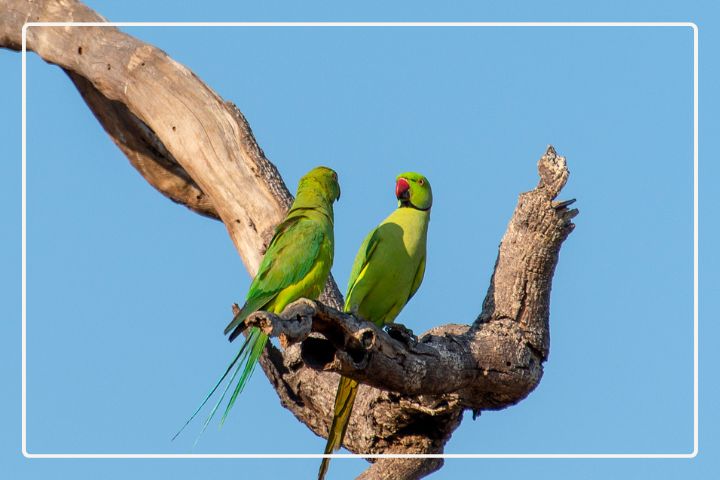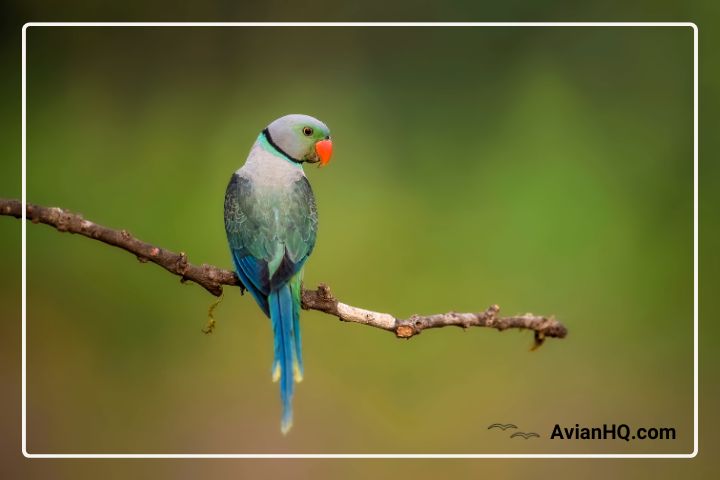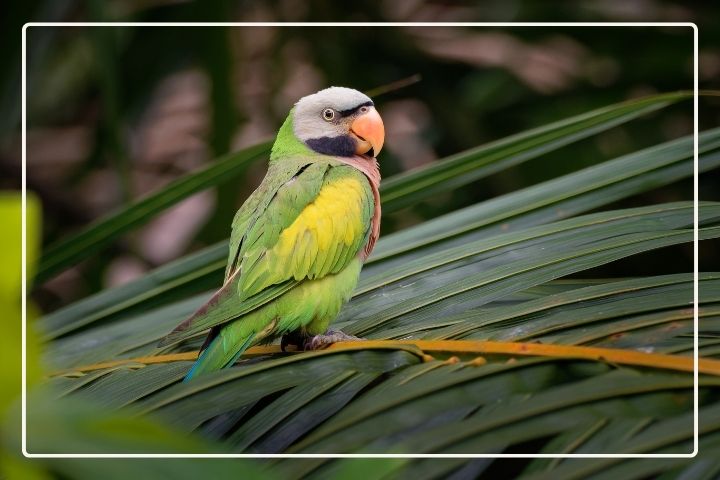How To Breed Alexandrine Parrots
Breeding Alexandrine parrots can be very rewarding but requires plenty of preparation and diligent care. By setting up the proper aviary, selecting a compatible pair, and following some best practices throughout the breeding process, you can have success raising happy, healthy Alexandrine chicks.
This comprehensive breeding guide covers everything you need to know before getting started, walks through the breeding process step-by-step, and shares tips for troubleshooting common issues. Follow along to learn how to breed your own Alexandrine parrots.
Before You Breed
Successful Alexandrine Parakeet breeding begins long before any mating or egg laying takes place. There are several key steps you need to take beforehand to set your birds up for breeding success:
Set Up the Right Aviary
Housed in a well-designed aviary, your Alexandrines will feel safe and comfortable engaging in mating behaviors and nesting. Here are some aviary requirements:
- Minimum dimensions: At least 5 feet wide by 4 feet deep by 6 feet tall for a pair
- Bar spacing: 1/2 to 3/4 inches between aviary wire mesh to prevent escapes
- Nest boxes: Provide an enclosed wooden nest box at least 15 inches high with a 3-4 inch diameter entrance hole
- Perches: Natural tree branches of varying widths; concrete perches for nail trimming
- Protection from predators/pests: Use solid roofing material and small aviary mesh to prevent snakes, rats, mice, etc. from entering
- Weather protection: Shelter from wind, rain, direct sun; proper ventilation
- Easy to clean: Sealed floors that can be disinfected; accessible for cleaning
Obtain a Pair of Healthy Adult Birds
Breeding success hinges on getting a robust, compatible breeding pair. Some tips:

- Source birds from reputable breeders or avian specialty stores, not mass breeders or wholesalers
- Select birds older than 2-3 years once they reach sexual maturity
- Pick active, vigorous birds with smooth, clean plumage
- Choose birds free of genetic issues; request health history
- Consider different color mutations like blue, lutino, albino
- Quarantine new birds for 30-45 days before introducing
Vet checks, lab work, and a balanced diet are key to ensuring your birds are healthy before breeding season. Address any underlying health conditions first.
Bonding and Compatibility
Once you’ve selected a potential pair, it’s crucial to take time to bond them and ensure they are compatible for breeding.
- Observe their interactions closely when first introduced in a neutral space. Watch for signs of aggression like lunging, biting, ruffled feathers.
- House pairs side-by-side for several weeks so they acclimate to each other before putting them in the same cage.
- Personality, behavior, and temperament are all important. Feisty, bold birds may not get along.
- Signs of bonding include preening each other, feeding each other, perching close together.
- Incompatible pairs may need to be separated and different individuals tried.
Taking it slow allows pairs to build a strong bond before breeding season. Always monitor pairs for any aggressive behavior problems that could jeopardize their health or chicks.
Read our article How Noisy Are Alexandrine Parrots?
Proper Diet and Healthcare
Nutrition and health directly impact breeding readiness and success.
- Feed a varied diet with lots of fresh fruits, veggies, sprouted seeds.
- Ensure calcium intake for egg laying. Supplement with cuttlebone.
- Increase protein before breeding season – egg food, insects, nuts.
- Annual vet exams, vaccinations, and labwork ensure underlying issues are addressed.
- Monitor weight closely – obesity can prevent egg laying.
- Trim wing feathers regularly to encourage exercise.
- Address any signs of nutritional deficiency, illness, or injury promptly.
Healthy, well-nourished birds have higher fertility, stronger chicks, better parenting skills. Work closely with an avian vet to optimize diet and health.
Breeding Your Alexandrines
Once your birds are fully bonded, accustomed to their aviary, and in prime health, you can begin preparing them for breeding.
Determine Gender
- DNA testing kits provide definitive gender identification.
- Males usually have blue ceres while female ceres are tan to brown. But some mutations have purplish ceres.
- Males are also generally bigger in size than females.
- Males may exhibit heart wings, vocalizing, and other courtship behaviors.
Consult an avian vet if you need help positively sexing your birds.
Induce Breeding Mode
To prepare birds for breeding:
- Gradually reduce daylight hours to mimic winter photoperiods.
- Rearrange cage furnishings and provide nesting materials – boxes, coconut fiber, wood shavings.
- Increase protein in diet and supplement with calcium for egg production.
- Play recordings of Alexandrine calls and chicks begging to stimulate breeding behavior.
- Avoid any disruptions, loud noises, or stress during this time.
Following their natural seasonal rhythms using these techniques brings birds into peak breeding condition.
Mating Rituals and Egg Laying
Alexandrine parrots engage in elaborate courtship rituals before successful mating:

- Males woo females by performing dances, heart wings displays, nibbling feet.
- Pairs preen each others’ feathers and feed each other regurgitated food.
- Females solicit feedings from the male as a sign of bonding.
- Mating usually takes place in or near the nestbox for privacy.
- Alexandrines average 2-4 eggs per clutch, laid every other day. Eggs are white and oval, about 1 inch long.
- Ensure breeding pairs have ample space, privacy, and calcium to support safe egg laying.
- Remove eggs immediately for artificial incubation if parents show aggression towards each other or eggs.
Incubation and Hatching
Once eggs are laid, proper incubation is vital:
- Natural incubation by parents takes 24-26 days. Ensure parents have privacy.
- Artificial incubators must maintain 99.5F and 60% humidity. Automated turning.
- Candle eggs at 5-7 days to check for viability. Discard any infertile eggs.
- Hatching starts with pipping – the chick breaks the air cell and starts breathing.
- Egg tooth appears and chick rotates to pip around the circumference of the egg.
- Ideally chicks hatch naturally without assistance. Only help if egg is pipped over 24 hours.
- Remove hatchlings once dry and reserves absorbed; reunite with parents in nest.
Caring for Chicks
Newly hatched Alexandrine chicks require diligent care:
- Remove any eggshell fragments remaining on chick. Tie off umbilical cord.
- Weigh chicks daily and record gains to ensure proper growth.
- Leave chicks with parents; supplement only if parents cannot adequately feed.
- Handfeed formula if parents reject chicks after 2-3 hours. Watch crop fill.
- Keep brooder warm at 90F. Lower 5 degrees each week.
- Once pinfeathers emerge, increase protein levels for feather growth.
Raising healthy, thriving chicks requires round-the-clock attention in these critical first weeks. Monitor crop fill and weight closely.
Weaning and Fledging
Weaning chicks off handfeeding formula or onto solid foods is challenging but important:

- Start offering finely chopped fruits, veggies, sprouts around 3-4 weeks old.
- Target weaning age is 8-12 weeks once chicks can self-feed effectively.
- Fledging begins around 5-6 weeks as chicks gain flight skills.
- Transfer chicks to roomy juvenile cage once fully weaned and fledged.
- Keep juveniles together until they reach sexual maturity around 2-3 years old.
Adequate weaning ensures chicks thrive on a proper adult diet. Fledging and transferring to new housing is a big transition to monitor.
Troubleshooting Common Breeding Issues
Even the most seasoned aviculturists run into various breeding challenges. Here are some common problems and solutions:
- Aggression between pairs: Separate immediately and reevaluate compatibility; work on trust and bonding before reintroducing.
- Infertile eggs: Review diet and health; ensure appropriate nesting materials and longer nights to induce breeding condition; replace male if low fertility persists.
- Egg binding: Increase humidity and calcium; provide laying basket; massage abdomen and warm soak if needed; seek vet help promptly.
- No interest in breeding: House pairs side-by-side first; provide nest box and materials early; rule out illness/deficiencies; try fostering chicks if parents disinterested.
- Chick neglect: Supplement feedings; handfeed formula if needed; give parents break from chicks if showing aggression.
- Chick injury/death: Improve nest box safety; remove chicks if parents aggressive; supplement heat, food meticulously.
Work closely with an avian vet to identify and resolve any breeding issues promptly. Don’t continue breeding pairs with a history of problems.
Read our article What Age Do Alexandrine Parrots Molt?
Conclusion
Breeding healthy, well-socialized Alexandrine parrots takes plenty of preparation, diligent care of the breeding pair, and round-the-clock commitment when chicks hatch. Set your birds up for success by following the recommendations in this breeding guide.
While rewarding, raising baby parrots is also a serious endeavor requiring extensive experience caring for the species. Be sure you’re ready for the responsibility before embarking on breeding. Work closely with avian vets, breeders, and experts to give your Alexandrine chicks the best care right from the start.








This piece has a beautiful rhythm, like the gentle unfolding of a story that you don’t want to end.